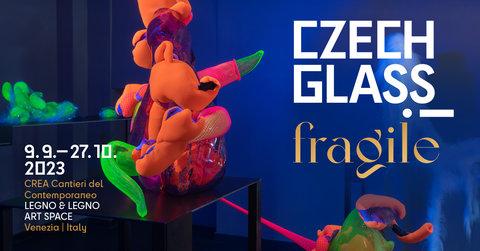
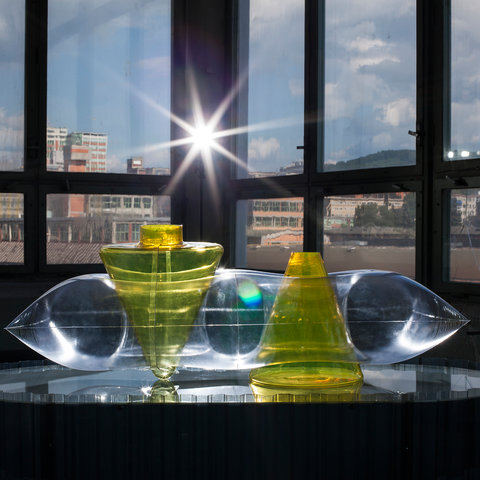
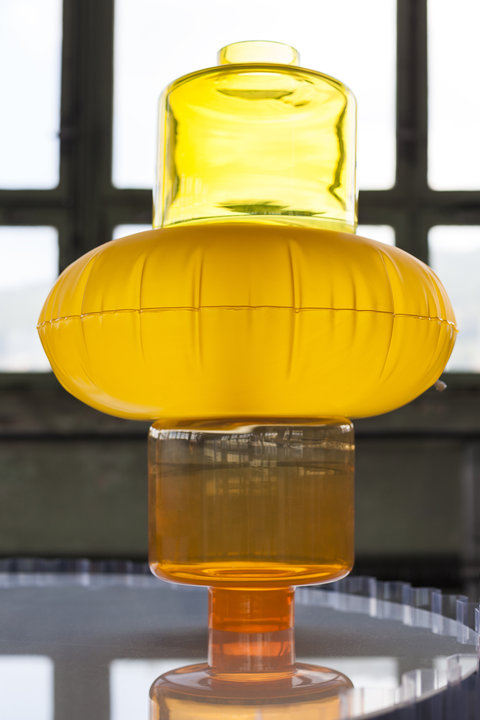
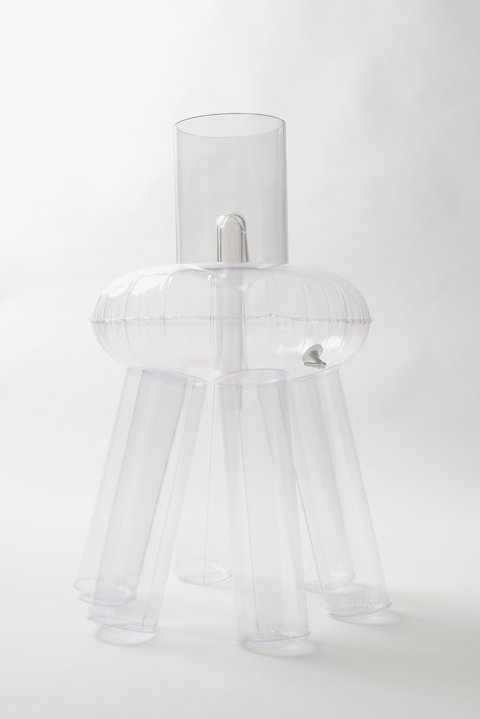
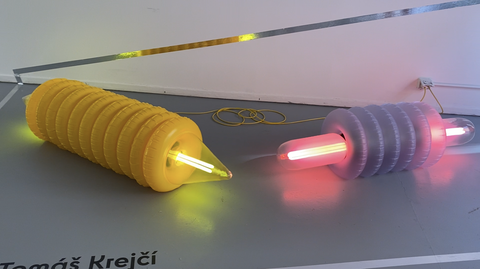
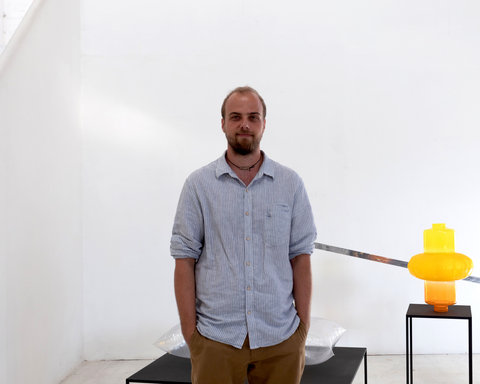
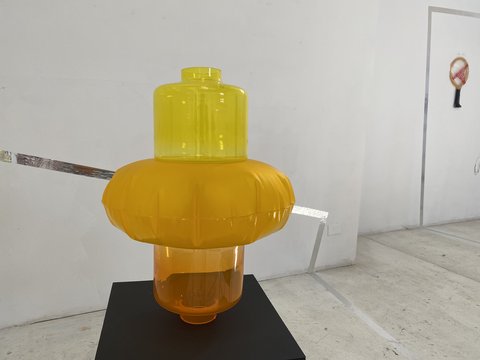
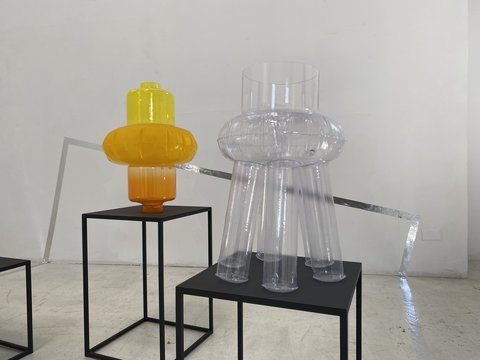
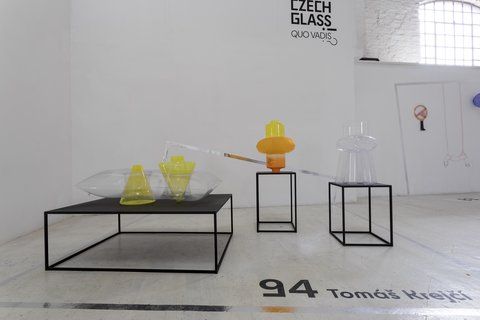
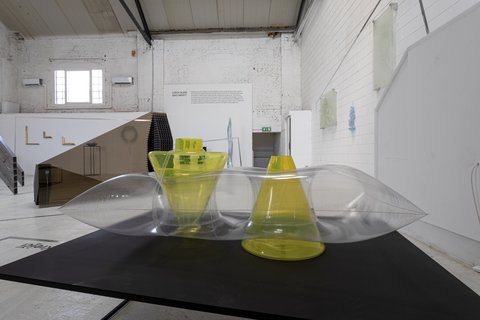

Tomáš Krejčí
He graduated from the Secondary School of Glassmaking in Valašské Meziříčí, processing glass and lighting objects. Then he continued at Tomas Bata University in Zlín in the Glass Design Studio under the guidance of prof. Petr Stanický. He is currently a PhD student at the same university. During his studies, he had the opportunity to take part in an educational programme at the Haute École des Arts du Rhin in Strasbourg in the local Glass Studio. He has already successfully presented his work at several Czech and international forums, specifically in Prague, London, Milan, Frankfurt am Main, Strasbourg, Venice and Osaka. In recent years, he has also been organising exhibitions at the Komnata Gallery, built from a former newsagent's trolleybus stop in the centre of Zlín. In his work, he prefers projects in which he has the opportunity to challenge the very essence of glass with other materials. He focuses on product design and free art, and his creative expression also includes site-specific installations. He uses several glass techniques, mostly glass blowing, glass melting and flat glass. His approach to glass is always very experimental.
About three years ago, Krejčí was fascinated by the confrontation of two very different materials - hand-blown glass and hand-made inflatable foils. By connecting them, objects were created based on attractive visual combinations on the one hand and on their different constructional properties on the other. It is a form of confrontation and at the same time a coexistence of two materials. In some cases, a natural, almost inseparable symbiosis has formed between these disparate elements and acts as one complete object. In other cases, the inflatable parts have become a kind of support for glass objects and serve more like a cover that protects the fragile hand-blown glass. However, seemingly disparate materials also have a lot in common. Both are air-shaped, require careful handling and are fragile. The Floating Futures collection also uses material limits, which are indirectly embodied in the idea of transience, instability and destruction. Inflated parts can deform, there is a risk of gradual air leakage, and thus complete destruction of the object - shattering of glass and puncture of the foil. However, this is also a natural part of the materials used.
For the exhibition in Venice, the collection has expanded to include other objects inspired by naval buoys and signalling devices. Krejčí thus followed up on a topic that has recently intensively encouraged him to think and transform his ideas into concrete meaningful forms. These are his reflections on the light-industrial landscape, the urban environment, signal signs and the effect of the light object in a certain situation. In general, it could be said that it is inspired by the night city and the industrial landscape.


